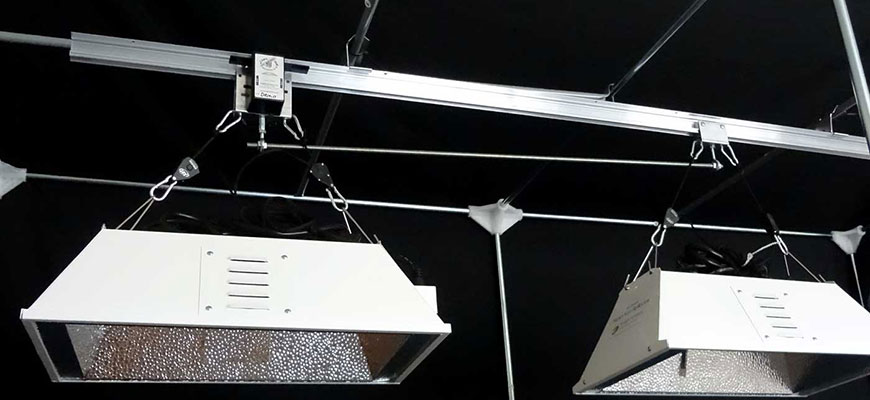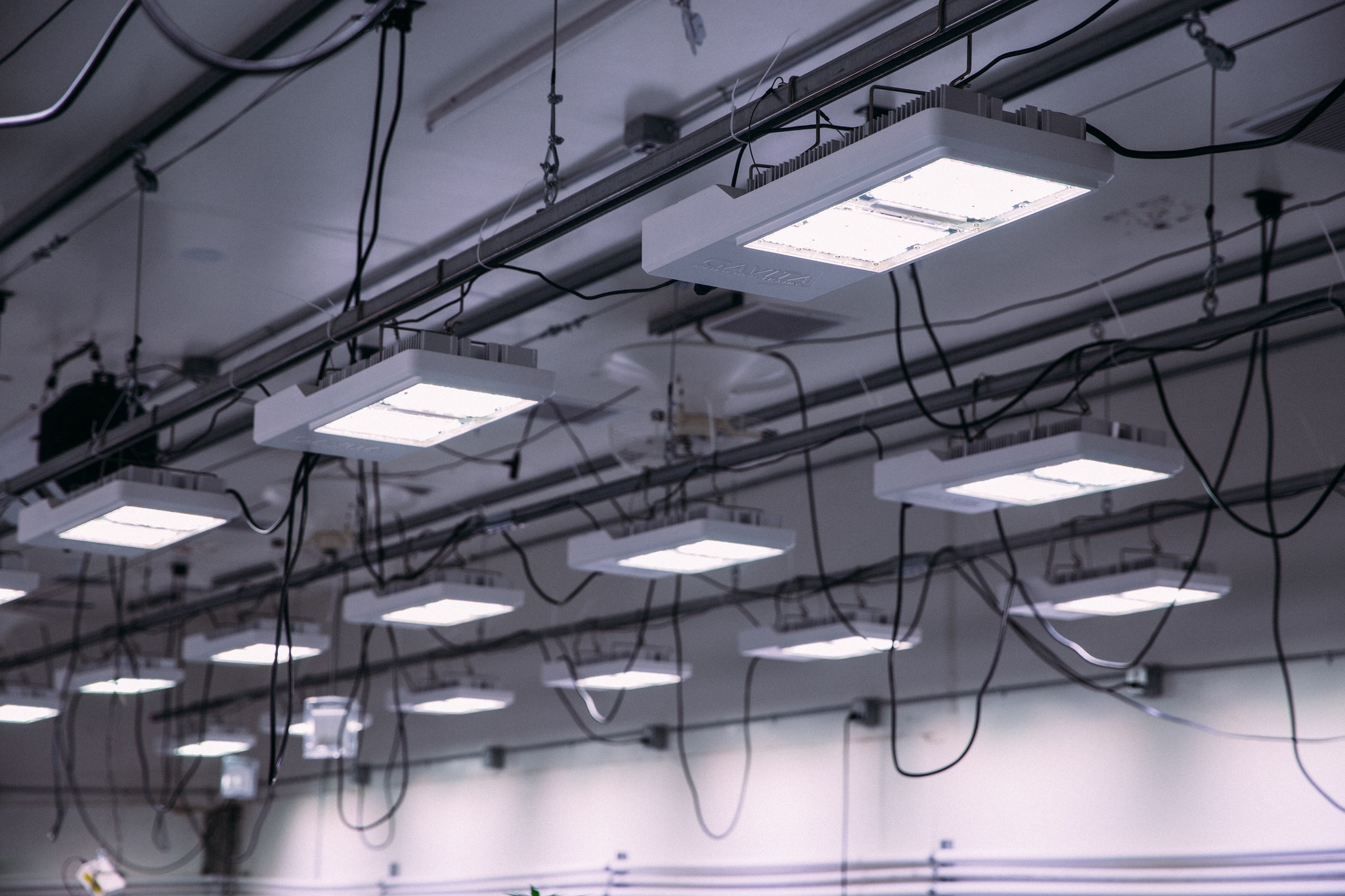How To Automate Grow Lights With Controllers, Movers, and Meters
When it comes to optimizing plant growth indoors, the automation of grow lights is a game-changer. By utilizing controllers, movers, and meters, you can achieve precise and efficient lighting conditions for your plants. Automation allows you to program and monitor light intensity, spectrum, and duration, ensuring your plants receive the ideal amount of illumination throughout their growth stages.
Benefits of Automating Grow Lights
Automating grow lights can be a great way to maximize productivity and efficiency in your garden. Automation allows you to control the lighting cycle of your grow lights with precision, resulting in optimal growth and development of plants.
By programming specific light intensities, spectrums, and time cycles, you can ensure that your plants receive the exact amount of light they need for healthy growth. Automating grow lights also helps save energy as you're only using them when needed. Additionally, automated systems can monitor the environment and make adjustments based on temperature or humidity levels.
This not only helps reduce stress on your plants but also results in fewer pests and disease outbreaks. Ultimately, automating grow lights leads to better yields and healthier plants with less effort from you!
Choosing the Right Controller
Choosing the right controller for your grow lights is essential to ensure that they operate properly and efficiently. There are a few key factors to consider when selecting a controller, such as size, type, and cost. Size is important because it affects how many lights can be connected to the controller.
Type refers to whether you need a single channel or multi-channel controller, depending on how many lights you're running. Cost will vary based on features and capabilities of each model, so make sure you compare different controllers before settling on one.
Additionally, research the brand and read reviews from other growers to ensure you get the best product for your setup. With proper research and comparison shopping, you'll be able to find the perfect controller for your grow light automation system!
Grow Light Timers And Controllers
Grow light timers and controllers are essential for any indoor growing setup. By providing a consistent, reliable schedule for your plants’ lighting, you can ensure that they stay healthy and get all the nutrients they need from their artificial light sources. For a single small light installation of 1,000 watts or less, an easy-to-use outlet timer should suffice - but for larger setups with multiple fixtures, a grow light controller is a must-have.
A grow light controller acts as a central power supply to set the on/off intervals of all your lights at once. Instead of having to manage multiple timers manually, you can simply plug each fixture into the controller and then set the desired schedule quickly and easily.
This makes it easier to operate larger grow operations while still maintaining safety and efficiency standards – something that is especially important in commercial grows. A lighting controller ensures that your lights receive exactly the right amount of power at precisely the right intervals so that your plants flourish.
Moving Your Grow Lights For Maximum Efficiency
Grow lights can be an incredibly valuable asset to any grow room setup, allowing plants to thrive even in rooms that are naturally dark. However, they must be used properly in order to maximize their potential and increase yields.
One way of doing this is by moving the lights around to ensure that all parts of a plant receive illumination. This not only helps promote vigorous growth and increased yields, but also assists in saving up energy costs over time as well.
Light movers are a great tool for any serious gardener or hydroponics enthusiast dealing with grow lights. These movers provide more uniform light coverage than stationary setups by changing the light angle throughout the day – thereby giving every part of the plant unfiltered access to high-intensity lighting from different angles.
This kind of improvement can allow for an impressive 30% increase in output, while at the same time reducing electrical costs by approximately 20%. Additionally, these systems can move beyond what’s offered by most timers and adjust their position on their own according to desired levels of photosynthetically active radiation or PAR found in each area of a plant foundation.
Light movers provide optimal performance and improved cost savings when used correctly – so it definitely pays off to utilize them!
Grow Light Mover Systems
The proper placement of grow lights is essential for maximizing the potential growth of your plants. Finding a balance between coverage and intensity is key for any successful indoor garden. Grow light movers are designed to improve the efficiency of your lighting system by enabling you to evenly spread light across multiple areas of your grow space.
With continuous movement, these devices can help reduce shaded areas, avoid hot spots, and get the most out of your grow lights. The function of a light mover system is simple yet effective in ensuring that as much coverage as possible is being achieved. The system consists of two parts--the motor and the track--which work together to slowly move the fixture over each area of the canopy.
This constant movement helps ensure that all areas are receiving an even amount of light, whether it be from standard lamps or reflectors. There are many different types and sizes available depending upon your needs, ranging from a single pot setup to an entire room’s worth of coverage.
By investing in a quality light mover system, you will have peace of mind knowing that every one of your plants has received optimal levels of light intensity while maintaining even distribution across all areas.
Measuring The Effectiveness of Your Grow Lights
In order to accurately measure the effectiveness of your grow lights, you can use a light meter. These devices allow you to adjust the height and distance of your lights in relation to the plant canopy. This way, you can manipulate how much light is hitting your plants, in order to make sure they are getting enough but not too much.
The two primary units of measure used when setting up lights are lumens (measuring brightness) or footcandles (measuring intensity), as well as PAR (photosynthetically active radiation). The amount of lumens and footcandles varies depending on what type of light you’ve chosen for your grow room - for example, LED lights typically have higher lumens output than an HPS lamp.
Additionally, PAR measurements indicate how much photosynthetic activity different wavelength levels of light will bring about in plants. Knowing these measurements helps ensure that your plants are receiving optimal lighting conditions for growth, health and yield.
By comprehensively tweaking the correct settings and measuring the results with a light meter, you can get complete control over your grow setup and maximize its efficiency.
Assessing Your Needs and Budget
Before you invest in an automated grow light system, it's important to assess your needs and budget. Consider why you need a controller, what features are most important to you, and how much money you're willing to spend. If your primary goal is just controlling the timing of your lights, then an entry-level model may suffice.
However, if you want more customization options like dimming or remote access, then a more advanced model may be necessary. You should also consider if you'll need additional accessories such as a light mover or electrical meter. Once you have an idea of what features and accessories are necessary for your setup, you can start to narrow down the best controllers that fit within your budget.
Moving Services for Light Controllers
Moving services for light controllers are a great way to automate the process of lighting for your indoor garden. With a controller, you can set up and control lighting schedules, intensity levels, and more from one device.
The controller will then communicate with movers that can be mounted in different areas of your garden to adjust the lighting as needed. You can also use meters to measure how much light each area of your garden is receiving. This allows you to make sure your plants receive an optimal amount of light every day.
With all these components together, you can easily automate the process of providing light for your plants and ensure they get the right amount at the right times. Entire moving process for light controllers are an effective way to get the best results out of your indoor garden without having to manually adjust things on a regular basis.
Setting Up the Controller Preparing for Installation Connecting
Setting up a grow light controller can be a great way to automate your indoor garden and ensure your plants receive the best light possible. Preparing for installation is the first step and involves selecting the correct size controller and power source for your specific needs.
Next, you will need to connect all of the necessary equipment such as lights, switches, and fans to the designated ports on the single controller. Be sure to follow all manufacturer instructions carefully in order to avoid any potential hazards.
Once everything is properly connected, it's time to test for maximum efficiency. This can be done by turning on all of the equipment at once and then adjusting settings such as timing, intensity, and duration until you achieve optimal results.
With some patience and tinkering, you'll soon have an automated grow light system that will help keep your plants happy and healthy!
Successfully Automating Your Grow Light System
As any gardener knows, getting the environment just right can make an enormous difference in your yield. Growing plants inside with the help of a grow light system is no different. Automation can be a big advantage when it comes to maintaining a consistent level of light and other environmental factors such as temperature and humidity. By investing in controllers, light movers, and meters, you can create the best possible growing conditions for your plants without having to constantly monitor them yourself.










